IonQ reaches 1,000 patents milestone with new quantum computing grants
Introduction & Market Context
JetBlue Airways Corp (NASDAQ:JBLU) delivered a positive operating margin in the second quarter of 2025, according to the company’s earnings presentation released on July 29. The airline’s stock rose 2.29% to $4.46 in pre-market trading, reflecting investor optimism about the results and strategic initiatives announced during the quarter.
The positive Q2 performance represents a significant improvement from the first quarter, when JetBlue reported an earnings per share of -$0.59 on revenue of $2.14 billion. The airline has been implementing its JetForward strategy to improve profitability while navigating industry-wide challenges including weather disruptions and air traffic control constraints.
Quarterly Performance Highlights
JetBlue exceeded its guidance ranges for the second quarter, delivering a positive operating margin despite continued industry pressures. The company reported Revenue per Available Seat Mile (RASM) of -1.5% year-over-year, significantly better than the initial guidance range of -3.5% to -7.5%.
"We delivered a positive operating margin and strong operational performance in 2Q25," said CEO Joanna Geraghty. "Strong peaks and close-in demand drove better-than-expected revenue results."
As shown in the following performance summary:
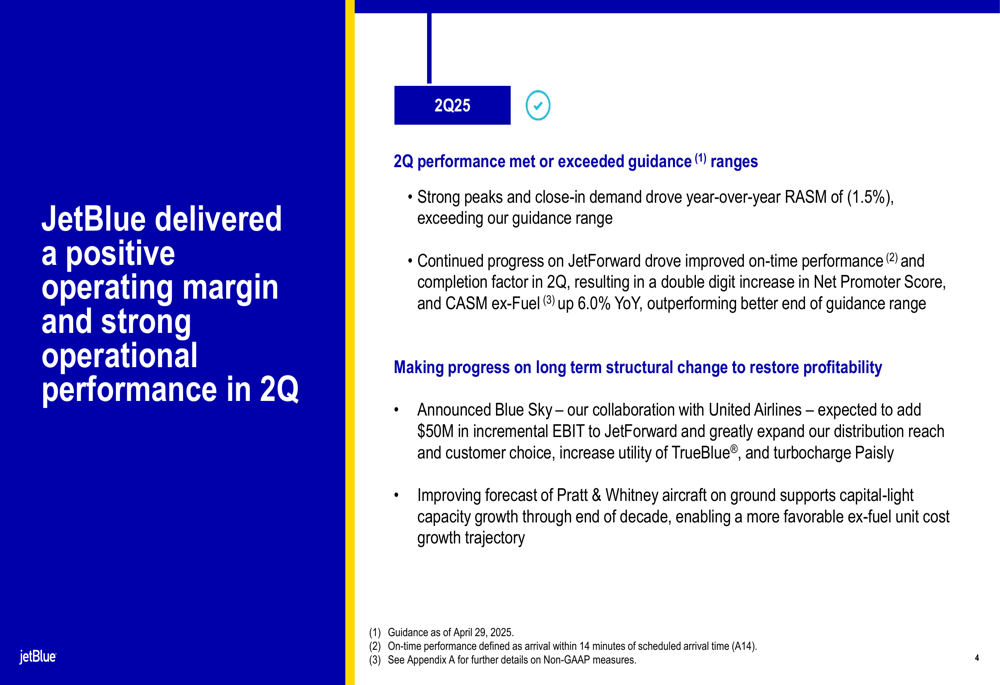
On the cost side, JetBlue reported Cost per Available Seat Mile excluding Fuel (CASM ex-Fuel) up 6.0% year-over-year, beating the initial guidance range of 6.5% to 8.5%. The company attributed this improvement to successful mitigation of capacity reductions and targeted cost control measures.
The following chart illustrates JetBlue’s cost control execution:
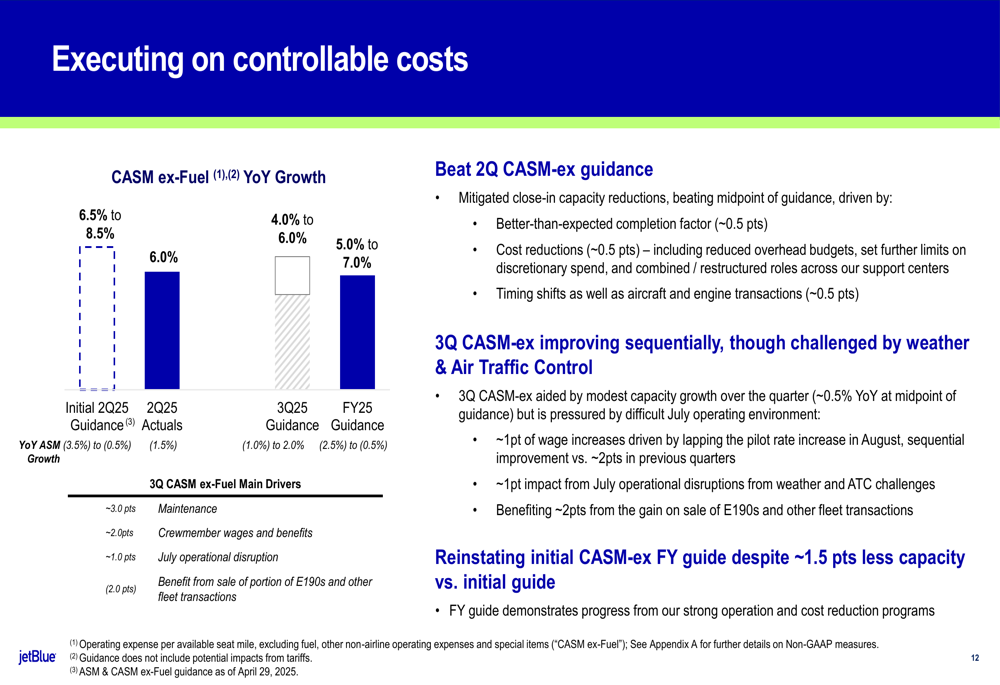
Strategic Initiatives
JetBlue has increased its JetForward profitability target by $50 million to $850-950 million in EBIT through 2027. The program has already realized $90 million in incremental EBIT during the first half of 2025, with improvements across operational metrics including a 3-point year-over-year increase in A14 (on-time arrivals within 14 minutes) and a 0.5-point improvement in completion factor.
The company’s progress toward profitability is illustrated in this chart:
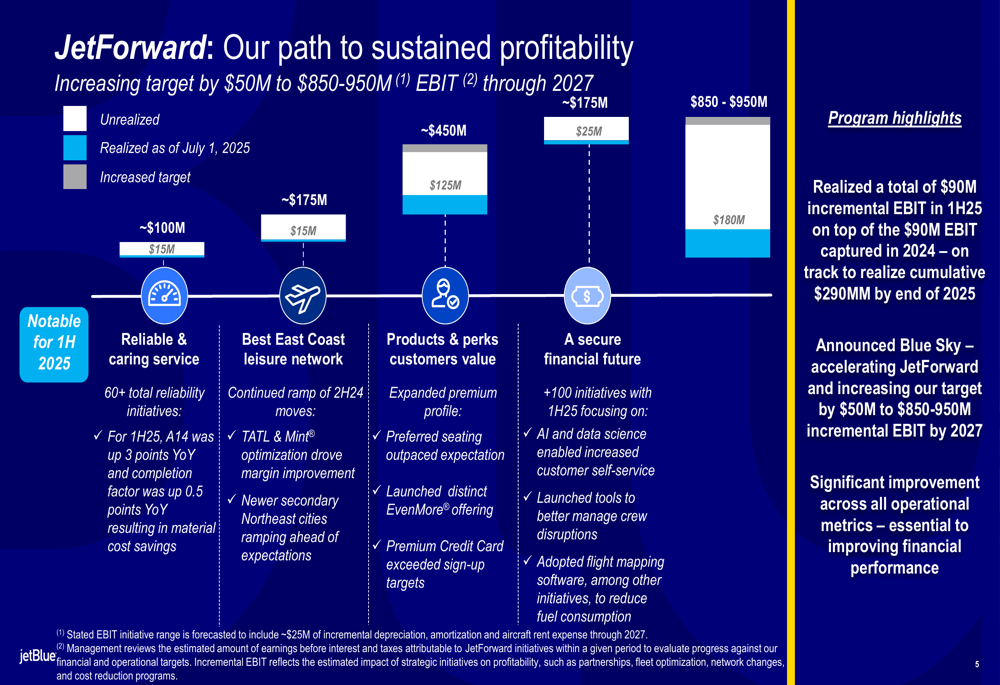
A significant development announced during the quarter is the Blue Sky partnership with United Airlines, which is expected to contribute an additional $50 million in incremental EBIT to the JetForward program. The partnership includes a traditional interline agreement that expands JetBlue’s distribution reach, loyalty enhancements with reciprocal accrual and redemption for TrueBlue and MileagePlus customers, and growth of JetBlue’s Paisly travel platform.
The partnership benefits are summarized in the following slide:

Fleet and Operational Improvements
JetBlue announced an improving forecast for Pratt & Whitney engines, which have been causing aircraft groundings across the industry. The company expects the Aircraft on Ground (AOG) situation to decrease this year and next, with full resolution by year-end 2027. This improvement supports JetBlue’s capital-light growth trajectory through the end of the decade.
The airline is taking several actions to optimize its fleet plan, including pausing four of ten planned A320 restyles, selling two A321XLR aircraft to avoid an orphan fleet, and ending E190 flying after Labor Day. These measures are expected to help keep capital expenditures below $1 billion annually from 2026.
As shown in the following aircraft forecast:

JetBlue’s order book reveals a focus on A220 deliveries in the coming years, with 18 A220 and 2 A321neo aircraft scheduled for delivery in 2025, followed by 16 A220 aircraft in 2026:
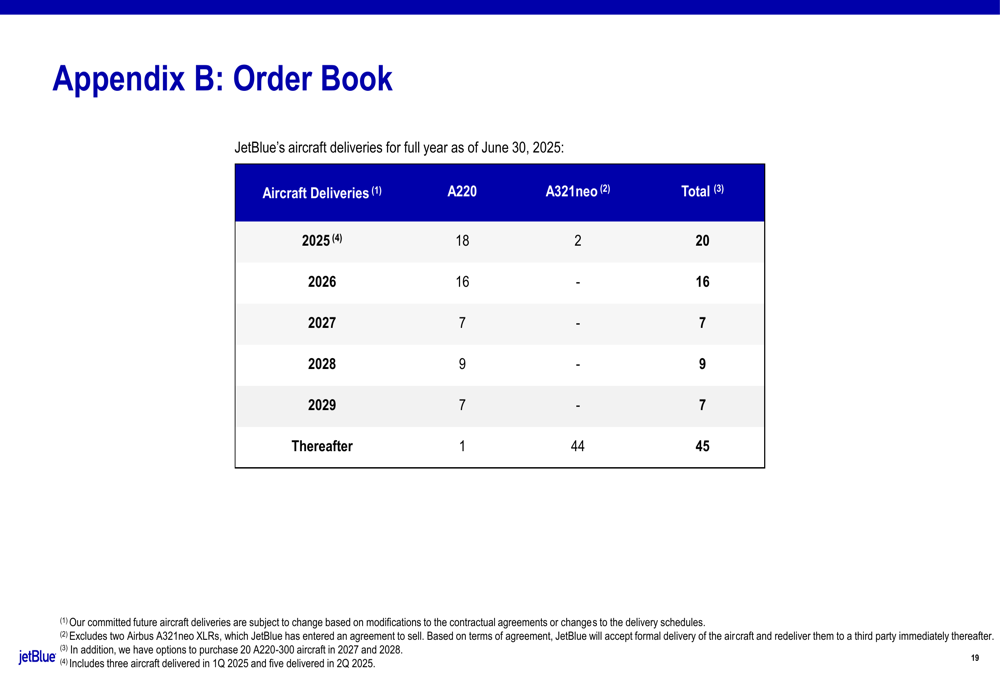
Financial Outlook and Guidance
Looking ahead to the third quarter, JetBlue expects RASM to be between -6.0% and -2.0% year-over-year, with available seat miles (ASMs) between -1.0% and 2.0%. The company noted that when adjusting for transitory factors such as the Crowdstrike outage (approximately 1% impact), the sequential RASM performance is improving.
The sequential RASM improvement is illustrated in this chart:
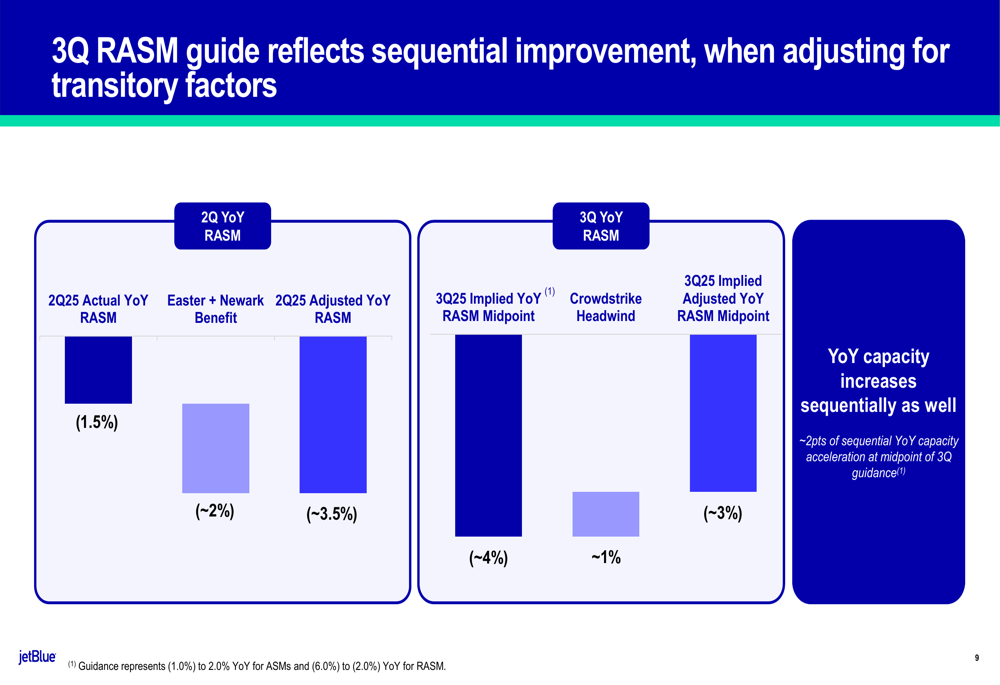
For the full year 2025, JetBlue is guiding to ASMs of -2.5% to -0.5% and CASM ex-Fuel of 5.0% to 7.0%. The company has reinstated its initial CASM-ex full-year guidance despite approximately 1.5 percentage points less capacity, highlighting confidence in its cost control measures.
The comprehensive outlook is summarized in the following guidance table:
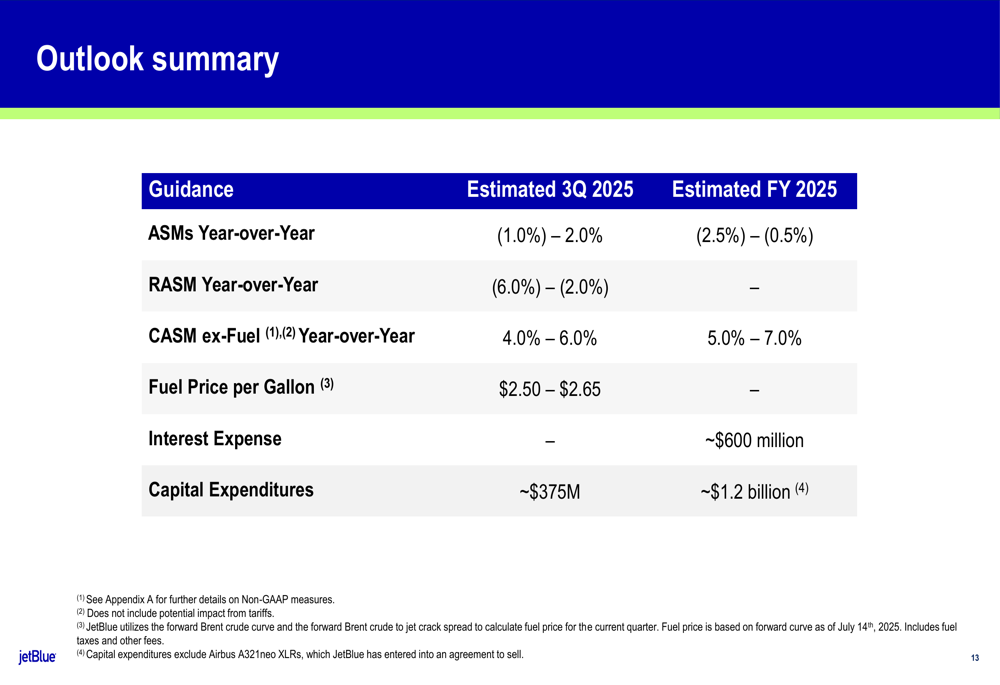
"The demand environment in 3Q is expected to be similar to 2Q," noted Marty St. George, President of JetBlue. "Premium, loyalty, and transatlantic continue to demonstrate resilience, though we remain cautious about quarter-to-date completion factor pressures due to weather and ATC challenges."
With positive operating margin achieved in Q2, improving operational metrics, and strategic initiatives like the United Airlines partnership gaining momentum, JetBlue appears to be making progress on its path to sustained profitability despite ongoing industry challenges.
Full presentation:
This article was generated with the support of AI and reviewed by an editor. For more information see our T&C.
